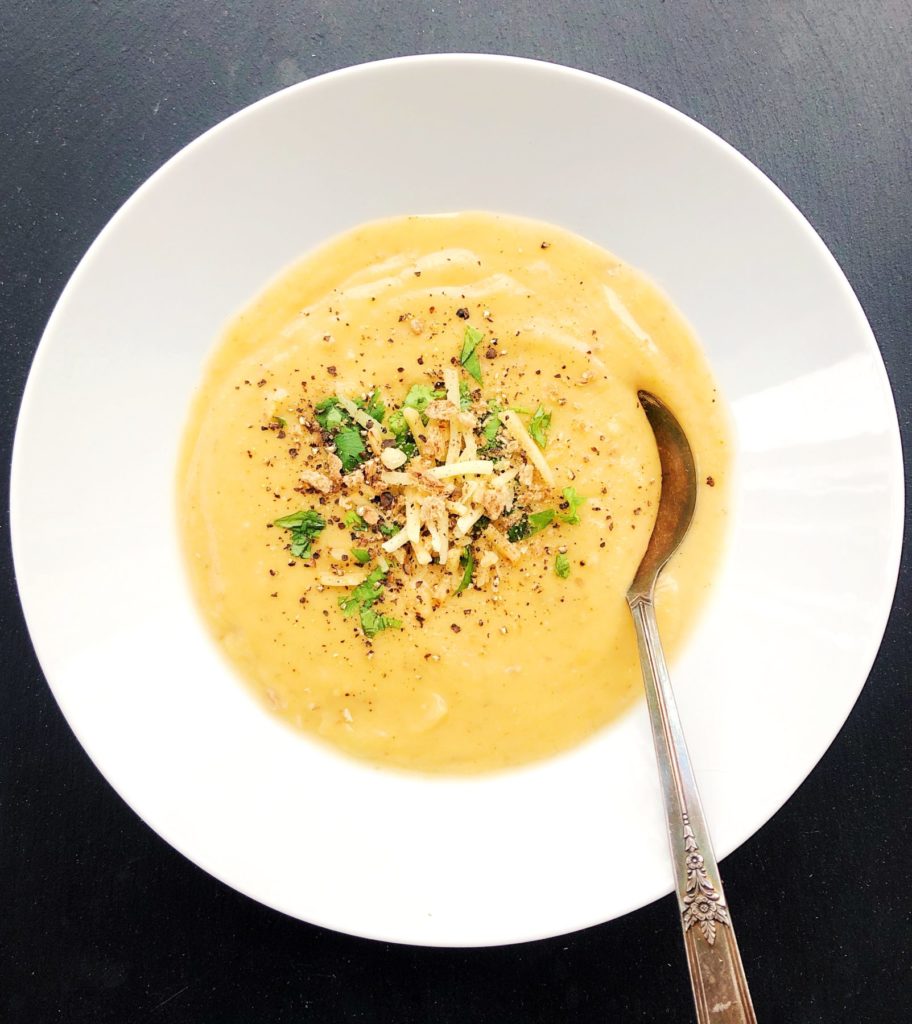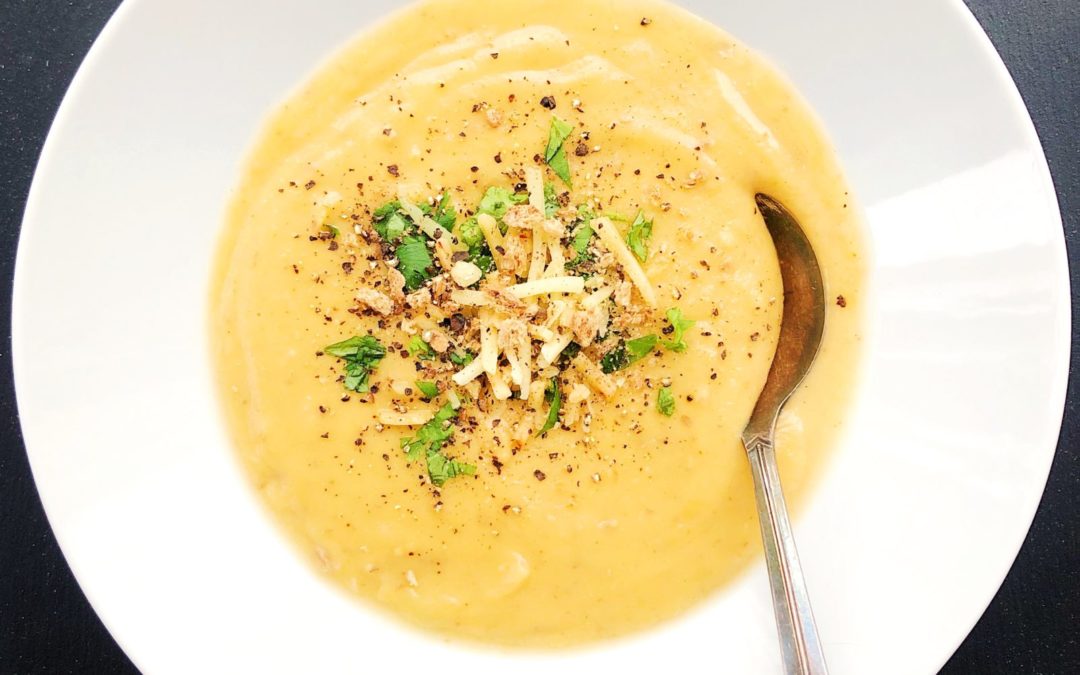What did you think about when you saw this creamy potato soup? Maybe, your response was “Yum!” Or, was your response different? Did you wonder if the “creamy” title meant it was too fatty or the potatoes had too many carbs?

Every time we make a decision about food, most of us have an internal conversation about that food choice. That internal conversation impacts are relationship with food and self. If you’re trying to improve your healthy, your body weight or relationship with food; start with self-compassion.
Monitor Your INNER Chatter.
Negative mental chatter impedes our ability to improve. It keeps us stuck in a place of self-defeat. We would never say the harsh words to others that we often say to ourselves. It’s logical to think self-discipline, self-control or judgment is necessary for a change, such as weight loss. The opposite is true. It’s a practice of self compassion that seems to be more serving of a healthy body body weight (and mind). A positive, compassionate mindset empowers us to make healthy decisions rather than emotional ones.
Self-Compassion Leads to Faster Change
I’ve witnessed that my self-critical clients, who tend to be hard on themselves, lose the motivation to stay the course. However, the clients who practice self-compassion, accept their “mistakes” more easily. They’re more resilient, and this self-compassionate mindset allows them to get back on track and feel empowered.
How to become more self-compassionate:
Step 1: Be aware and notice thoughts around self or eating.
Does a tape start running in your head that admonishes you not to eat too much or not to eat certain types of foods? Or that you’re a failure if you do? We can choose to engage with thoughts or let them pass through and return to the present moment. This takes PRACTICE because our minds are programmed to THINK. As you notice your thoughts, avoid judging them. Aim to be neutral and compassionate.
Step 2: Offer yourself a hug.
Place your hand on your heart or give yourself a mini hug. I know, this sounds WEIRD. I felt the same when someone offered me the same advice. Self-compassion guru, Kristen Neff, discusses how physical touch lowers our stress hormones. When our body perceives we love ourselves, the mind often follows. It’s a good first step when we can’t seem to get our mind in the right place.
Step 3: Consider time making time to practice through meditation
Find a self-compassion meditation you enjoy and aim to be consistent for at least one month. Spending as little as 10 minutes at the beginning of your day can create the right mindset for the rest of it. The benefits of meditation aren’t limited to the time you sit in meditation. Spending 1% of your day in meditation results in a more calm, centered mind that treats yourself better for the 99% rest of it.
Want more potato-based soups? Try this Spiced Sweet Potato Soup
Print


Creamy “Two” Potato Soup
- Prep Time: 10
- Cook Time: 30
- Total Time: 40 minutes
- Yield: 6 1x
Ingredients
Scale
- 2 T. olive oil
- 3 garlic cloves
- 1 medium onion, chopped
- 1 large sweet potato, diced
- 2 large Yukon potatoes, diced
- 1/4 c. white wine (good enough to drink)
- 1/8 c. fresh sage, chopped
- 1 T. garlic powder
- 4 c. vegetable broth
- 1/2 c. 2% milk
- 1/2 c. half and half
- 1 parmesan cheese rind
- 2 bay leaves
- 1/2 t. salt
- 1/2. t. black pepper
Instructions
- Heat oil in a large stockpot over medium-high heat. Add garlic and onion and sauté for 5 minutes, stirring occasionally, until soft.
- Add potatoes, and stir until combined. Continue cooking for 4-5 minutes watching to ensure it doesn’t burn. Deglaze with white wine.
- Add chopped sage, garlic powder and salt.
- Add broth, bay leaves, and parmesan cheese rind.
- Reduce heat to medium-low, cover, and simmer for about 15-20 minutes or until the potatoes are soft, stirring every few minutes so that the bottom of the pot does not burn. (The smaller you dice your potatoes, the faster they will cook.)
- Once the potatoes are tender, stir in the milk and cream.
- Remove bay leaves and parmesan cheese rind.
- Using an immersion blender, blend. Or using a blend, blend in small batches.
- Taste, and season with additional salt or pepper if needed.
- Serve warm, garnished with your desired toppings. Or, transfer to a container and refrigerate for up to 3 days.
Nutrition
- Serving Size:
- Calories: 198
- Sugar: 6.3 g
- Sodium: 808.8 mg
- Fat: 7.3 g
- Saturated Fat: 2.4 g
- Carbohydrates: 28.9 g
- Fiber: 3.8 g
- Protein: 3.9 g
- Cholesterol: 8.7 mg
Find it online: https://mcdanielnutrition.com/creamy-potato-soup/

